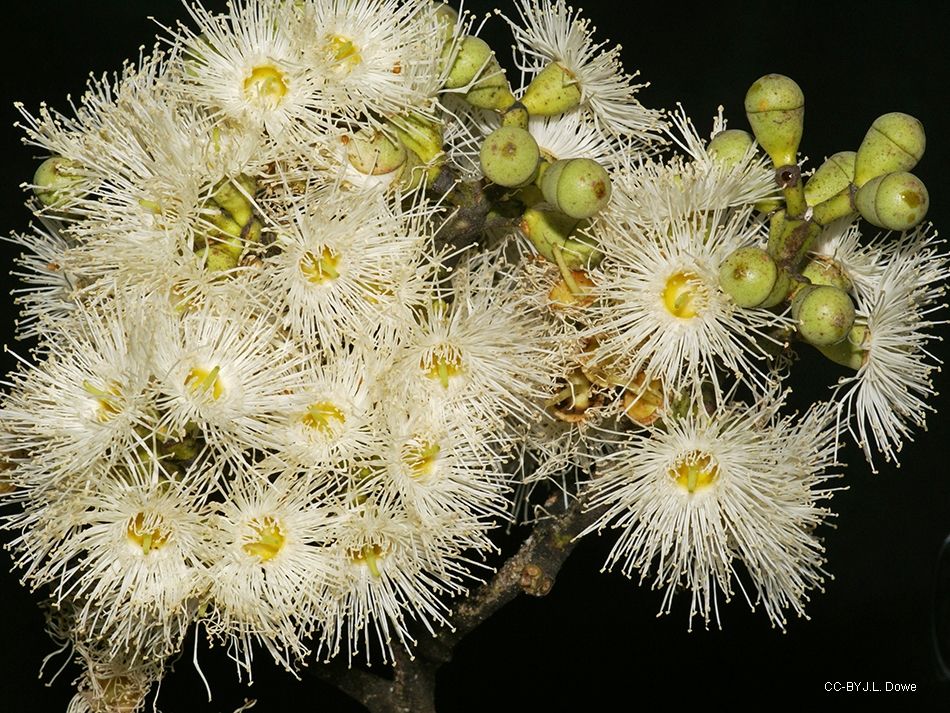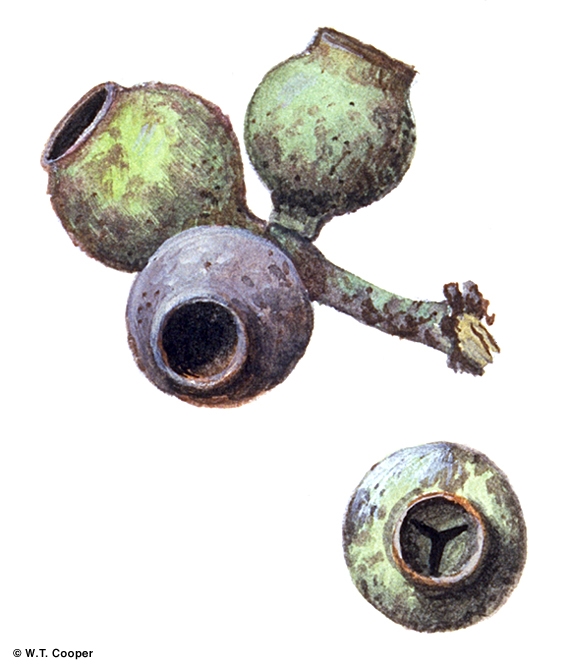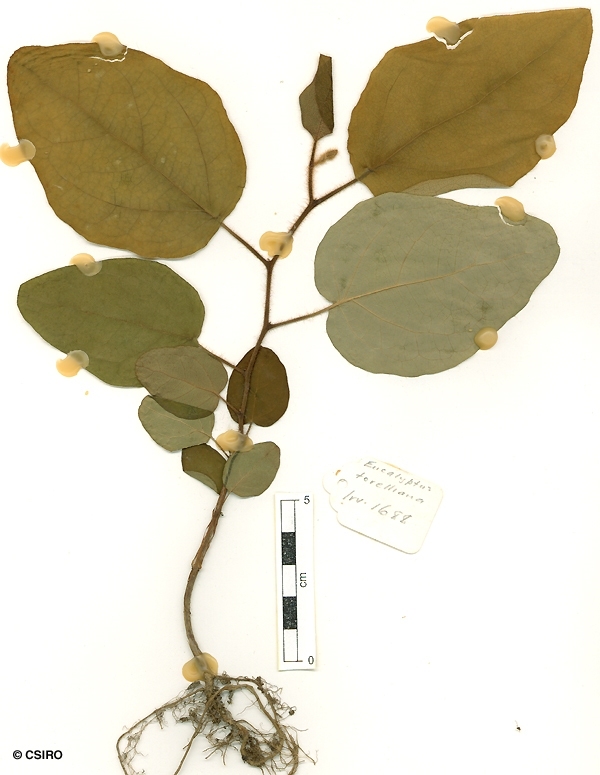Australian Tropical Rainforest Plants - Online edition
Corymbia torelliana (F.Muell.) K.D.Hill & L.A.S.Johnson





Hill, K.D. & Johnson, L.A.S. (1995) Telopea 6: 385.
Cadaga; Cadargi; Cadaghi; Cadagi
Bark usually smooth and green. Large trees with a stocking of rough bark at the base.
Leaf bearing twigs usually clothed in rather stiff, erect, pink or red hairs. Leaf blades about 8-15 x 1.4-4.2 cm with pale hairs on both surfaces. Oil dots visible with a lens if not visible to the naked eye.
Peduncles angled or terete, usually ferruginous hairy. Individual flowers +/- sessile. Operculum +/- hemispherical, about 5-8 mm diam., sometimes apiculate, shorter than the calyx tube (hypanthium). Outer operculum shed early, well before the mature bud stage.
Fruits sessile or very shortly pedicellate, globose or depressed urceolate, about 11-13 x 11-14 mm. Valves usually 3-4, deeply included.
Cotyledons reniform, about 8-15 mm wide. Oil dots very sparse, more numerous about the margins. At the tenth leaf stage: leaf blade ovate, base peltate, upper surface with a few bristle-like hairs along the midrib; petiole and stem densely hairy. Lignotuber absent. Seed germination time 11 days.
Endemic to NEQ, naturally restricted to the area between Cooktown and Ingham. Cultivated elsewhere and becoming naturalised inCEQand south eastern Queensland. Altitudinal range from near sea level to 900 m. Grows in wet sclerophyll forest, on rain forest margins and as an emergent in rain forest which is advancing into eucalypt forest.
Now widely planted in the tropics for its spreading leafy crown and striking dark green smooth stem.





